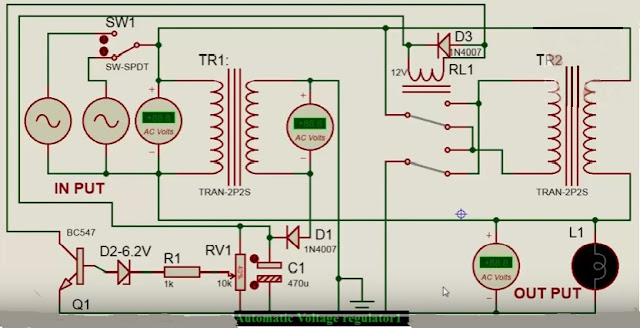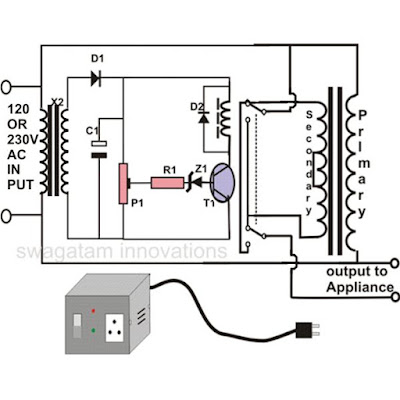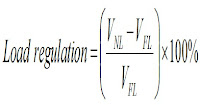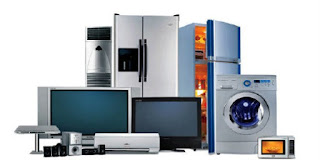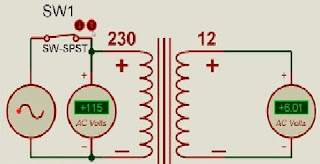Today we are going to review Everest EPS30 ABS This is a good stabilizer for your digital television, set top box and your home theater system, this model is a EPS30 ABS from Everest. On the box the you can find some photo of the stabilizer, that's how it suppose to look inside
You can find German technology and 12 months warranty period in the box. This contain a input power of 170 to 270 volts and output power of 200 to 240 volts good enough for your television, home theatre system and DVD's and this also got various other features like Sophisticated Solid State Circuitry Technology, User Friendly Display, Power Saving Technology, Noise Free and much more. The weight is 2000 grams you can feel it while handling it and this is not wall mountable actually a floor type
 The price which i bought is for Rs.759 which is comparatively less when i compare to other brands and find the same product directly from Everest stabilizer with much more lesser price of Rs.687 its better to buy directly from manufacturer. And the reviews from snapdeal customer is 3.9 out of 5 and the reviews from flipkart customers is 3.6 out of 5. Most people are well satisfied with the price
The price which i bought is for Rs.759 which is comparatively less when i compare to other brands and find the same product directly from Everest stabilizer with much more lesser price of Rs.687 its better to buy directly from manufacturer. And the reviews from snapdeal customer is 3.9 out of 5 and the reviews from flipkart customers is 3.6 out of 5. Most people are well satisfied with the price
The Everest EPS 30 Voltage Stabilizer is a great solution for home entertainment systems as it functions without any noise. The stabilizer also helps you save up to forty percent power by reducing unnecessary consumption. This means lower electricity bills.
Great design
The stabilizer is extremely compact, even with all the incredible features incorporated in it. The bright colour and superior ABS plastic body makes it easy to clean. The stabilizer can be placed on the floor or on a flat surface such as your TV cabinet. A helpful display on the stabilizer keeps you informed about the voltage supply to your home entertainment system. The entire unit weighs a total of two kilograms.
Compatible devices
The Everest EPS 30 Voltage Stabilizer works great with television sets and home entertainment systems including docking stations, home theatre systems and other speaker sets.
Sophisticated technology
Everest voltage stabilizers ensures that you only get the best from this stabilizer as it employs the state-of-the-art Solid State Circuitry technology that makes its more reliable and stable.
Power range
The stabilizer works on an input power between 170 Volts to 270 Volts and an output power between 200 Volts and 240 Volts.
You can find German technology and 12 months warranty period in the box. This contain a input power of 170 to 270 volts and output power of 200 to 240 volts good enough for your television, home theatre system and DVD's and this also got various other features like Sophisticated Solid State Circuitry Technology, User Friendly Display, Power Saving Technology, Noise Free and much more. The weight is 2000 grams you can feel it while handling it and this is not wall mountable actually a floor type
 The price which i bought is for Rs.759 which is comparatively less when i compare to other brands and find the same product directly from Everest stabilizer with much more lesser price of Rs.687 its better to buy directly from manufacturer. And the reviews from snapdeal customer is 3.9 out of 5 and the reviews from flipkart customers is 3.6 out of 5. Most people are well satisfied with the price
The price which i bought is for Rs.759 which is comparatively less when i compare to other brands and find the same product directly from Everest stabilizer with much more lesser price of Rs.687 its better to buy directly from manufacturer. And the reviews from snapdeal customer is 3.9 out of 5 and the reviews from flipkart customers is 3.6 out of 5. Most people are well satisfied with the priceThe Everest EPS 30 Voltage Stabilizer is a great solution for home entertainment systems as it functions without any noise. The stabilizer also helps you save up to forty percent power by reducing unnecessary consumption. This means lower electricity bills.
Great design
The stabilizer is extremely compact, even with all the incredible features incorporated in it. The bright colour and superior ABS plastic body makes it easy to clean. The stabilizer can be placed on the floor or on a flat surface such as your TV cabinet. A helpful display on the stabilizer keeps you informed about the voltage supply to your home entertainment system. The entire unit weighs a total of two kilograms.
Compatible devices
The Everest EPS 30 Voltage Stabilizer works great with television sets and home entertainment systems including docking stations, home theatre systems and other speaker sets.
Sophisticated technology
Everest voltage stabilizers ensures that you only get the best from this stabilizer as it employs the state-of-the-art Solid State Circuitry technology that makes its more reliable and stable.
Power range
The stabilizer works on an input power between 170 Volts to 270 Volts and an output power between 200 Volts and 240 Volts.
Everest EPS30 ABS Voltage Stabilizer Product Reviews
Today we are going to review Everest EPS30 ABS This is a good stabilizer for your digital television, set top box and your home theater system, this model is a EPS30 ABS from Everest. On the box the you can find some photo of the stabilizer, that's how it suppose to look inside
You can find German technology and 12 months warranty period in the box. This contain a input power of 170 to 270 volts and output power of 200 to 240 volts good enough for your television, home theatre system and DVD's and this also got various other features like Sophisticated Solid State Circuitry Technology, User Friendly Display, Power Saving Technology, Noise Free and much more. The weight is 2000 grams you can feel it while handling it and this is not wall mountable actually a floor type
 The price which i bought is for Rs.759 which is comparatively less when i compare to other brands and find the same product directly from Everest stabilizer with much more lesser price of Rs.687 its better to buy directly from manufacturer. And the reviews from snapdeal customer is 3.9 out of 5 and the reviews from flipkart customers is 3.6 out of 5. Most people are well satisfied with the price
The price which i bought is for Rs.759 which is comparatively less when i compare to other brands and find the same product directly from Everest stabilizer with much more lesser price of Rs.687 its better to buy directly from manufacturer. And the reviews from snapdeal customer is 3.9 out of 5 and the reviews from flipkart customers is 3.6 out of 5. Most people are well satisfied with the price
The Everest EPS 30 Voltage Stabilizer is a great solution for home entertainment systems as it functions without any noise. The stabilizer also helps you save up to forty percent power by reducing unnecessary consumption. This means lower electricity bills.
Great design
The stabilizer is extremely compact, even with all the incredible features incorporated in it. The bright colour and superior ABS plastic body makes it easy to clean. The stabilizer can be placed on the floor or on a flat surface such as your TV cabinet. A helpful display on the stabilizer keeps you informed about the voltage supply to your home entertainment system. The entire unit weighs a total of two kilograms.
Compatible devices
The Everest EPS 30 Voltage Stabilizer works great with television sets and home entertainment systems including docking stations, home theatre systems and other speaker sets.
Sophisticated technology
Everest voltage stabilizers ensures that you only get the best from this stabilizer as it employs the state-of-the-art Solid State Circuitry technology that makes its more reliable and stable.
Power range
The stabilizer works on an input power between 170 Volts to 270 Volts and an output power between 200 Volts and 240 Volts.
You can find German technology and 12 months warranty period in the box. This contain a input power of 170 to 270 volts and output power of 200 to 240 volts good enough for your television, home theatre system and DVD's and this also got various other features like Sophisticated Solid State Circuitry Technology, User Friendly Display, Power Saving Technology, Noise Free and much more. The weight is 2000 grams you can feel it while handling it and this is not wall mountable actually a floor type
 The price which i bought is for Rs.759 which is comparatively less when i compare to other brands and find the same product directly from Everest stabilizer with much more lesser price of Rs.687 its better to buy directly from manufacturer. And the reviews from snapdeal customer is 3.9 out of 5 and the reviews from flipkart customers is 3.6 out of 5. Most people are well satisfied with the price
The price which i bought is for Rs.759 which is comparatively less when i compare to other brands and find the same product directly from Everest stabilizer with much more lesser price of Rs.687 its better to buy directly from manufacturer. And the reviews from snapdeal customer is 3.9 out of 5 and the reviews from flipkart customers is 3.6 out of 5. Most people are well satisfied with the priceThe Everest EPS 30 Voltage Stabilizer is a great solution for home entertainment systems as it functions without any noise. The stabilizer also helps you save up to forty percent power by reducing unnecessary consumption. This means lower electricity bills.
Great design
The stabilizer is extremely compact, even with all the incredible features incorporated in it. The bright colour and superior ABS plastic body makes it easy to clean. The stabilizer can be placed on the floor or on a flat surface such as your TV cabinet. A helpful display on the stabilizer keeps you informed about the voltage supply to your home entertainment system. The entire unit weighs a total of two kilograms.
Compatible devices
The Everest EPS 30 Voltage Stabilizer works great with television sets and home entertainment systems including docking stations, home theatre systems and other speaker sets.
Sophisticated technology
Everest voltage stabilizers ensures that you only get the best from this stabilizer as it employs the state-of-the-art Solid State Circuitry technology that makes its more reliable and stable.
Power range
The stabilizer works on an input power between 170 Volts to 270 Volts and an output power between 200 Volts and 240 Volts.







